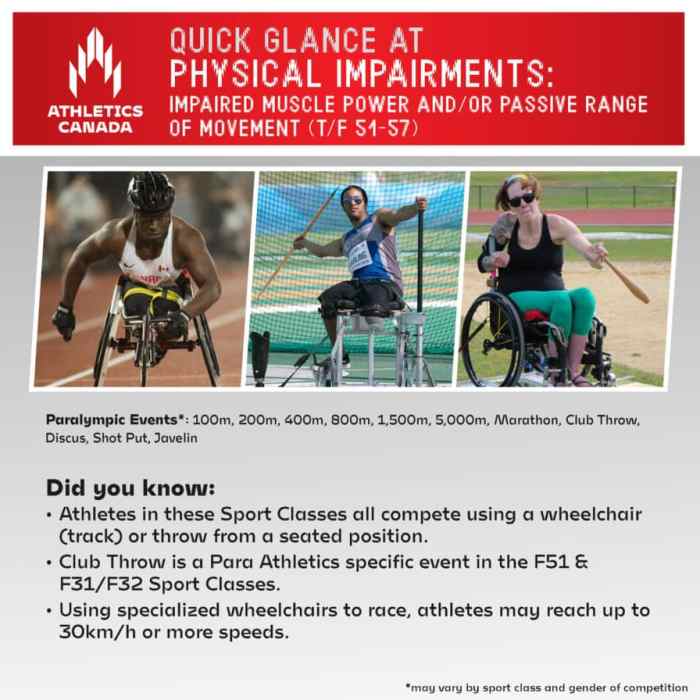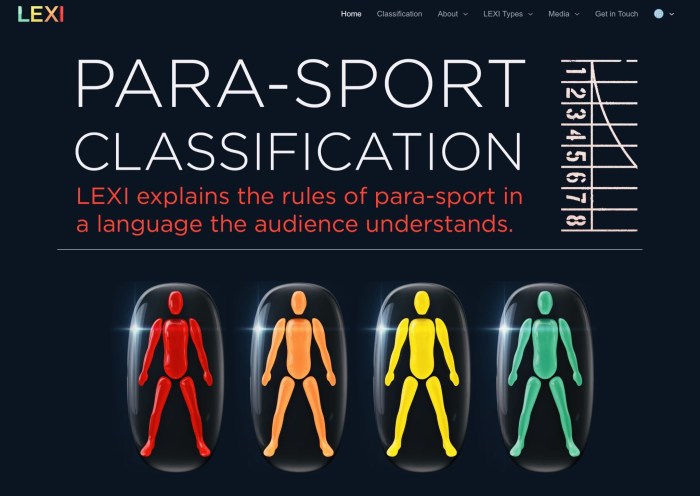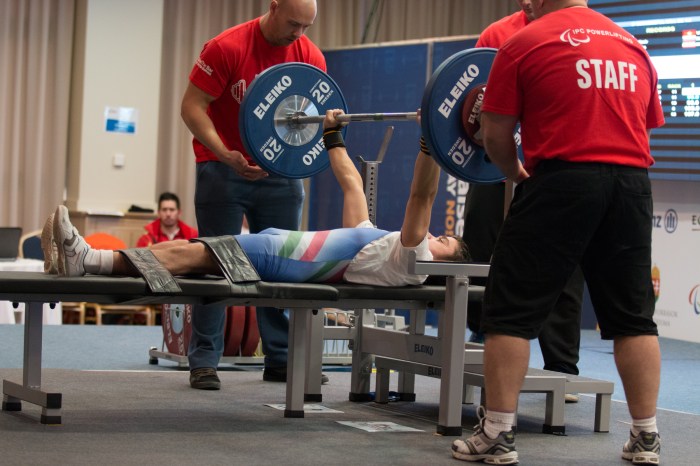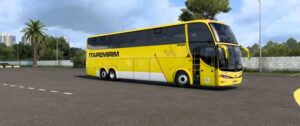What does S10 mean in Paralympics? This classification system plays a crucial role in ensuring fair competition and showcasing the remarkable abilities of athletes with a wide range of impairments. The S10 category encompasses individuals with specific physical limitations, allowing them to compete in a variety of Paralympic sports while ensuring a level playing field.
The S10 classification is based on a comprehensive evaluation process that considers the nature and severity of an athlete’s impairment, their functional limitations, and their ability to perform specific movements and skills. This rigorous system ensures that athletes are grouped with others who share similar abilities, creating an equitable environment for competition.
Understanding S10 Classification in Paralympics: What Does S10 Mean In Paralympics

Classification in Paralympic sports plays a crucial role in ensuring fair competition by grouping athletes with similar functional abilities together. This system allows athletes with varying impairments to compete on a level playing field, fostering inclusion and promoting sportsmanship.
S10 Classification Criteria
The S10 classification is assigned to athletes with a range of impairments that affect their movement and coordination. The classification process involves a thorough evaluation of an athlete’s functional ability, including their:
- Balance and coordination:This assessment examines the athlete’s ability to maintain equilibrium, perform coordinated movements, and control their body during activities.
- Strength and power:The evaluation assesses the athlete’s muscular strength and power, which are crucial for activities like running, jumping, and throwing.
- Range of motion:The athlete’s joint flexibility and range of motion are assessed to determine their ability to perform movements efficiently.
- Endurance:The classification process considers the athlete’s ability to sustain physical activity over a period of time.
Athletes who meet the specific criteria for the S10 classification are grouped together, ensuring they compete against others with similar functional abilities.
Paralympic Sports with S10 Athletes
S10 athletes compete in a variety of Paralympic sports, including:
- Athletics:S10 athletes compete in track and field events such as sprints, middle-distance races, long jump, and high jump.
- Swimming:S10 athletes compete in various swimming events, showcasing their speed and endurance in the water.
- Cycling:S10 athletes compete in road and track cycling events, demonstrating their strength, endurance, and tactical skills.
- Table Tennis:S10 athletes compete in table tennis, showcasing their precision, hand-eye coordination, and strategic thinking.
Physical Characteristics of S10 Athletes

Athletes classified as S10 in Paralympic sports demonstrate a diverse range of impairments that affect their movement and coordination. Understanding the physical characteristics of S10 athletes provides insight into the challenges they overcome and the remarkable abilities they showcase in competition.
In the Paralympics, “S10” refers to a classification for swimmers with physical impairments, often affecting their legs and/or feet. While we’re on the topic of classifications, you might be wondering if the highly anticipated action RPG, “Black Myth: Wukong”, will be available on PS4.
You can find out more about that on this website: is black myth wukong on ps4. Returning to the Paralympics, understanding the different classifications helps us appreciate the incredible athleticism and determination of these athletes.
Impairments Qualifying for S10 Classification
The S10 classification encompasses athletes with a variety of impairments, including those affecting the central nervous system, musculoskeletal system, and sensory functions. The specific impairments that qualify for S10 vary depending on the sport, but generally involve limitations in:
- Cerebral Palsy:A condition affecting muscle coordination, movement, and posture due to brain damage before or during birth. Athletes with cerebral palsy may experience spasticity, ataxia, or dyskinesia, affecting their balance, coordination, and control of movement.
- Spinal Cord Injuries:Damage to the spinal cord can result in varying degrees of paralysis and loss of sensation below the injury site. S10 athletes with spinal cord injuries may have limited mobility in their legs and feet, affecting their running, jumping, and swimming.
- Amputations:Athletes with amputations above the knee or elbow are eligible for the S10 classification. They may use prosthetics to compensate for the missing limb, but their performance is still affected by the loss of limb function.
- Muscular Dystrophy:A group of genetic diseases that cause progressive muscle weakness and degeneration. S10 athletes with muscular dystrophy may experience difficulty with mobility, endurance, and strength.
- Arthrogryposis:A condition present at birth characterized by joint contractures and limited range of motion. Athletes with arthrogryposis may have difficulty with movement and coordination, particularly in their limbs.
- Other Impairments:The S10 classification also includes athletes with other impairments that significantly affect their ability to participate in sports, such as limb deficiencies, severe arthritis, or neurological disorders.
Functional Limitations Associated with S10 Impairments
The impairments experienced by S10 athletes can lead to a range of functional limitations, impacting their performance in different sports. These limitations may include:
- Reduced Strength and Power:Impairments affecting muscle function can limit an athlete’s ability to generate force and power, affecting their running speed, jumping height, and throwing distance.
- Impaired Balance and Coordination:Conditions like cerebral palsy and spinal cord injuries can affect an athlete’s balance and coordination, making it challenging to maintain stability and control movements, particularly during fast-paced activities.
- Limited Range of Motion:Joint contractures and limb deficiencies can restrict an athlete’s range of motion, impacting their ability to perform certain movements effectively, such as swinging a bat or performing a swimming stroke.
- Sensory Deficits:Athletes with sensory impairments, such as blindness or deafness, may face challenges with spatial awareness, reaction time, and communication, requiring adaptations and adjustments in training and competition.
- Fatigue and Endurance:Some impairments, like muscular dystrophy, can cause muscle fatigue and decreased endurance, limiting an athlete’s ability to sustain high-intensity activity over extended periods.
Real-World Examples of S10 Athletes, What does s10 mean in paralympics
S10 athletes have achieved remarkable success in various Paralympic sports, showcasing the incredible resilience and determination that characterize this classification. Some notable examples include:
- Oscar Pistorius (South Africa):A sprinter with double below-knee amputations, Pistorius became the first amputee to compete in the Olympic Games. He was classified as S10 in the Paralympics and won multiple gold medals in the 100m, 200m, and 400m events.
- Marieke Vervoort (Belgium):A wheelchair racer with muscular dystrophy, Vervoort competed in the Paralympic Games in the S10 classification. She won gold medals in the 100m and 200m events and was a vocal advocate for the rights of people with disabilities.
- Alan Fonteles (Brazil):A swimmer with cerebral palsy, Fonteles competed in the Paralympic Games in the S10 classification. He won multiple medals in the 100m freestyle, 200m freestyle, and 400m freestyle events, showcasing his exceptional talent and perseverance.
Sports and Events for S10 Athletes
S10 athletes are a diverse group with varying levels of impairment, making them eligible for a wide range of Paralympic sports. This section explores the specific sports and events that S10 athletes participate in, highlighting the adaptations made to accommodate their unique abilities and the challenges they face.
Paralympic Sports with S10 Classification
S10 athletes participate in a variety of Paralympic sports, each with specific events tailored to their classification. The table below Artikels the sports and events where S10 athletes compete.
| Sport | Events | S10 Classification Details |
|---|---|---|
| Athletics | 100m, 200m, 400m, 800m, 1500m, 5000m, 10,000m, Marathon, 110m Hurdles, 400m Hurdles, Long Jump, Triple Jump, High Jump, Shot Put, Discus, Javelin | S10 athletes compete in all track and field events, with adjustments made for specific impairments. For example, athletes with visual impairments may use a guide runner in events like the marathon. |
| Swimming | 50m Freestyle, 100m Freestyle, 200m Freestyle, 400m Freestyle, 800m Freestyle, 1500m Freestyle, 50m Backstroke, 100m Backstroke, 200m Backstroke, 50m Breaststroke, 100m Breaststroke, 200m Breaststroke, 50m Butterfly, 100m Butterfly, 200m Individual Medley, 400m Individual Medley | S10 athletes compete in all swimming events, with no significant adaptations required. |
| Table Tennis | Singles, Doubles | S10 athletes compete in both singles and doubles table tennis events. The rules and equipment are the same as in able-bodied table tennis. |
| Badminton | Singles, Doubles | S10 athletes compete in both singles and doubles badminton events. The rules and equipment are the same as in able-bodied badminton. |
| Tennis | Singles, Doubles | S10 athletes compete in both singles and doubles tennis events. The rules and equipment are the same as in able-bodied tennis. |
| Cycling | Road Race, Time Trial, Track Cycling | S10 athletes compete in all cycling events, with adaptations made for specific impairments. For example, athletes with visual impairments may use a tandem bike in road racing. |
Adaptations for S10 Athletes in Paralympic Sports
Adaptations in Paralympic sports are designed to ensure fairness and inclusivity for athletes with different abilities. For S10 athletes, these adaptations are often subtle and focus on providing equal opportunities for success. Here are some examples:
- Guide Runners:Athletes with visual impairments may use a guide runner in events like the marathon, ensuring safety and allowing them to compete at the same level as other athletes.
- Modified Equipment:In some cases, athletes with specific impairments may use modified equipment, such as a specialized wheelchair for wheelchair tennis or a tandem bike for cycling.
- Start Procedures:Start procedures may be adapted for athletes with certain impairments, such as a staggered start in swimming for athletes with visual impairments.
Challenges Faced by S10 Athletes
While S10 athletes benefit from adaptations, they also face unique challenges in their respective sports. These challenges can be physical, psychological, or logistical in nature.
- Physical Limitations:S10 athletes may have limitations in their range of motion, balance, or coordination, which can affect their performance in certain sports.
- Fatigue:Some athletes may experience fatigue more quickly due to their impairment, requiring careful training and pacing strategies.
- Access to Resources:Access to specialized equipment, training facilities, and coaches can be a challenge for some S10 athletes, especially in developing countries.
- Psychological Barriers:Overcoming the psychological challenges associated with disability can be a significant obstacle for S10 athletes, requiring mental strength and resilience.
Notable S10 Athletes
The S10 classification in the Paralympics represents a diverse group of athletes with a wide range of abilities and backgrounds. These individuals have demonstrated exceptional talent and determination in various Paralympic sports, inspiring countless others with their achievements.
Prominent S10 Athletes
The following table showcases prominent S10 athletes across various Paralympic sports, highlighting their remarkable achievements and inspirational stories.
| Athlete Name | Sport | Notable Achievements | Inspirational Story |
|---|---|---|---|
| Jessica Long | Swimming | 13 Paralympic medals, including 7 golds, World Championship titles, and multiple American records. | Born with fibular hemimelia, Jessica had both legs amputated below the knee at 18 months old. She started swimming at age 10 and quickly rose to prominence, becoming an inspiration for individuals with disabilities worldwide. |
| Markus Rehm | Athletics | Paralympic gold medalist in the long jump, multiple world records, and participation in the able-bodied World Championships. | Markus was born with a congenital right leg deficiency. He began competing in athletics at age 14 and has defied expectations, becoming one of the world’s best long jumpers. |
| Eleanor Simmonds | Swimming | 5 Paralympic gold medals, multiple world championships, and a Member of the Order of the British Empire (MBE). | Eleanor was diagnosed with achondroplasia, a form of dwarfism, at birth. Despite facing challenges, she became a successful swimmer, inspiring many with her resilience and dedication. |
| Blake Leeper | Athletics | Multiple Paralympic medals in the 100m and 200m sprints, and a World Championship title. | Blake was born with bilateral tibial hemimelia, a rare condition that affects the development of the shin bones. He has overcome significant adversity to become a prominent sprinter, advocating for inclusivity in sports. |
The Evolution of S10 Classification

The S10 classification in the Paralympics has evolved significantly since its inception, reflecting advancements in understanding disability and the desire for fair competition. This evolution has involved adjustments to classification criteria, leading to changes in athlete participation and performance.
Changes in Classification Criteria
The classification criteria for S10 athletes have been subject to revisions over time, reflecting the evolving understanding of disability and the need for fairness in competition. These changes have aimed to ensure that athletes compete against those with similar functional limitations, creating a level playing field.
- Initial Criteria:Early classification systems relied primarily on observable physical impairments, such as limb deficiencies or neurological conditions. Athletes were grouped based on the severity of their impairment, with limited consideration for functional abilities.
- Focus on Functional Abilities:Later revisions shifted the focus to functional abilities, recognizing that athletes with different impairments could have similar functional capacities. This approach emphasized the athlete’s ability to perform specific movements and tasks relevant to their sport, leading to a more nuanced classification system.
- Technological Advancements:Technological advancements in prosthetics and assistive devices have also influenced classification criteria. Athletes using advanced technology may have enhanced abilities compared to those without, necessitating adjustments to ensure fair competition.
Impact of Changes on Participation and Performance
The changes in S10 classification have had a significant impact on athlete participation and performance.
- Increased Participation:The shift towards functional abilities has encouraged greater participation from athletes with a wider range of impairments. This inclusivity has expanded the pool of eligible athletes, leading to a more diverse and competitive field.
- Improved Performance:The focus on functional abilities has also led to improved performance levels. Athletes are now classified based on their actual capabilities, allowing them to compete against those with similar functional limitations, fostering greater parity and pushing performance boundaries.
- Enhanced Fairness:The evolving classification system has contributed to a fairer and more equitable playing field. By classifying athletes based on their functional abilities, the system ensures that athletes compete against those with similar limitations, reducing the advantage of those with more significant impairments.








Leave a Comment